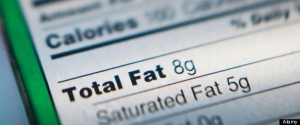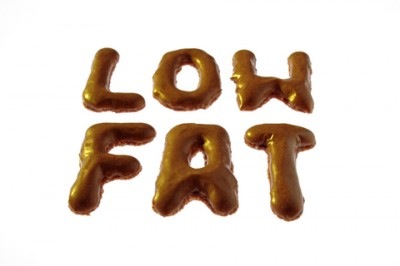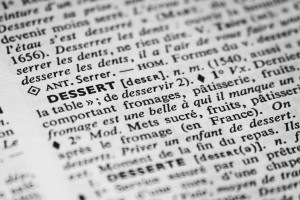 Food labels can be pretty confusing. For instance, you might think that you know what fat free means – but if a food product is labeled “fat free” does mean that it’s totally fat free? Not necessarily.
Food labels can be pretty confusing. For instance, you might think that you know what fat free means – but if a food product is labeled “fat free” does mean that it’s totally fat free? Not necessarily.
According to the FDA, a food can be labeled fat free if it contains less than 0.5 grams of fat per serving. So, something could have 0.4 grams of fat and still be called fat free.
Maybe you’re saying, “so what.” Here’s the issue: the words per serving. Say you’re eating more than one serving (a serving is often a lot smaller than the portion most of us eat). If each serving has 0.4 grams of fat it can be labeled “fat free” — but, if you’re eating 3 servings (not such a stretch of the imagination), you’re actually eating 1.2 grams of fat (3 x 0.4 grams) in a food that’s labeled “fat free.”
Okay. 1.2 grams of fat is not a huge amount – but the example is to illustrate that it’s good to both read labels – which the FDA requires –and really understand what they mean so you know what you’re getting in your food.
Definitions of Common Terms Used On Food Packages
▪ Fat-free = less than 0.5 grams of fat per serving, with no added fat or oil.
▪ Low fat = 3 grams or less of fat per serving.
▪ Less fat = 25% or less fat than the comparison food.
▪ Saturated fat free = Less than 0.5 grams of saturated fat and 0.5 grams of trans-fatty acids per serving.
▪ Cholesterol-free = less than 2 mg of cholesterol per serving and 2 grams or less of saturated fat per serving.
▪ Low cholesterol = 20 mg or less of cholesterol per serving and 2 grams or less of saturated fat per serving.
▪ Reduced calorie = at least 25% fewer calories per serving than the comparison food (the “regular” version of the same food).
▪ Low calorie = 40 calories or less per serving.
▪ Extra lean = less than 5 grams of fat, 2 grams of saturated fat, and 95 mg of cholesterol per 100 gram serving of meat, poultry, or seafood.
▪ Lean = less than 10 grams of fat, 4.5 g of saturated fat, and 95 mg of cholesterol per 100 gram serving of meat, poultry, or seafood.
▪ Light (fat) = 50% or less of the fat in the comparison food.
▪ Light (calories) = one-third fewer calories than the comparison food.
▪ High fiber = 5 grams or more fiber per serving.
▪ Sugar-free = less than 0.5 grams of sugar per serving.
▪ Reduced sugar — at least 25% less sugar per serving compared with a similar food.
▪ Sodium-free (salt-free) = less than 5 mg of sodium per serving.
▪ Low sodium = 140 mg or less per serving.
▪ Very low sodium = 35 mg or less per serving.
This article is part of the 30 day series of blog posts called: 30 Easy Tips for Looser Pants and Excellent Energy.



